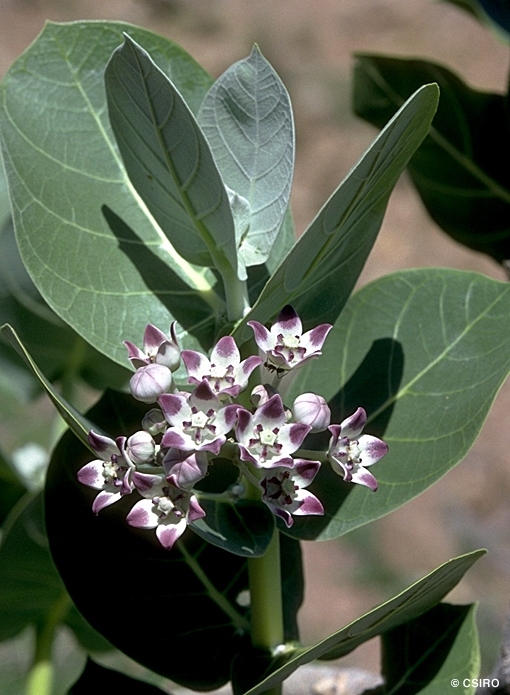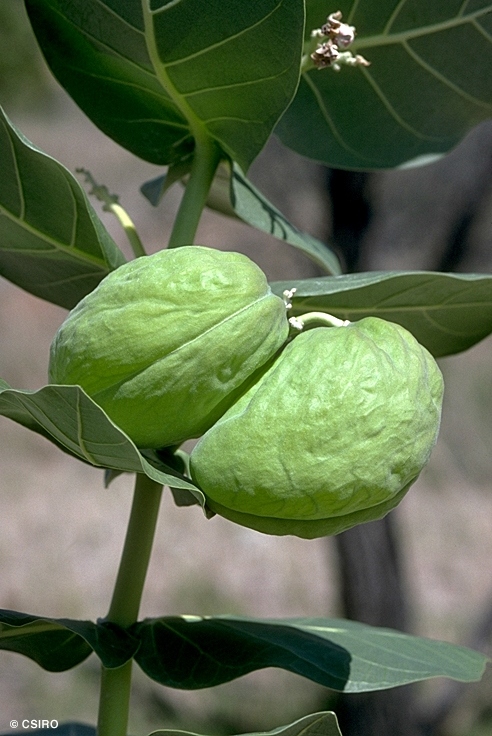Australian Tropical Rainforest Plants - Online edition
Calotropis procera (Aiton) R.Br. ex W.T.Aiton





Aiton, W.T. (1811) Hortus Kewensis 2: 78.
Rubber Tree; Small Crown-flower; Auricula Tree; Calotrope; Kapok Tree; King's Crown; Camel Weed
Usually flowers and fruits as a shrub about 3-4 m tall.
Flowers about 23-25 mm diam., pedicels about 15-27 mm long. Sepals cream or white. Corolla lobes cream but pink or purplish towards the apex. Pollinia green and somewhat sticky, translator brown. Each flower producing significant quantities of nectar.
Fruit large, about 10-13 x 6-7 cm producing a milky exudate when cut. Seeds winged, very numerous, each about 8-10 x 5 mm, attached by broad shiny, white funicles. Testa clothed in short, erect, white hairs. Cotyledons ovate, shaped like a tombstone, much wider than the radicle.
Cotyledons broadly elliptic, about 16-25 x 13-15 mm, apex very rounded, base attenuate, exudate milky. Petiole channelled on the upper surface. First pair of leaves stipulate, stipules small. At the tenth leaf stage: leaves obovate, both the upper and lower surfaces densely clothed in a spider-web-like hairy material which is easily rubbed off with the finger nail. Exudate milky, copious and rapid, from all parts of the plant. Usually 2 brown hair-like structures (glands) 1 mm long, on the upper surface of the leaf blade near the petiole, one on each side of the midrib. Stipules about 1 mm long, linear. Terminal bud and stem woolly white. Seed germination time 7 to 11 days.
An introduced plant originally from Africa and Asia now naturalised across northern Australia and also in parts of central Australia. Occurs in WA, NT, NEQ and the northern part of CEQ. Altitudinal range from near sea level to 700 m. Usually grows in open forest but also found on the margins of monsoon forest and beach forest.
A poisonous plant causing problems in both man and animals. However, although reported to be unpalatable, it is frequented by cattle and eaten by them occasionally without ill effect. Everist (1974).
A food source of the larval stage of the Lesser Wanderer Butterfly. Common & Waterhouse (1981).
Sap toxic if eaten. Austin, D. F. 1998. Poisonous Plants of Southern Florida.
The milky sap is very irritating, and toxic enough to have been used as an arrow poison. There has been some medicinal use of the flowers and leaves but the root-bark has been of greater importance. Cribb (1981).





